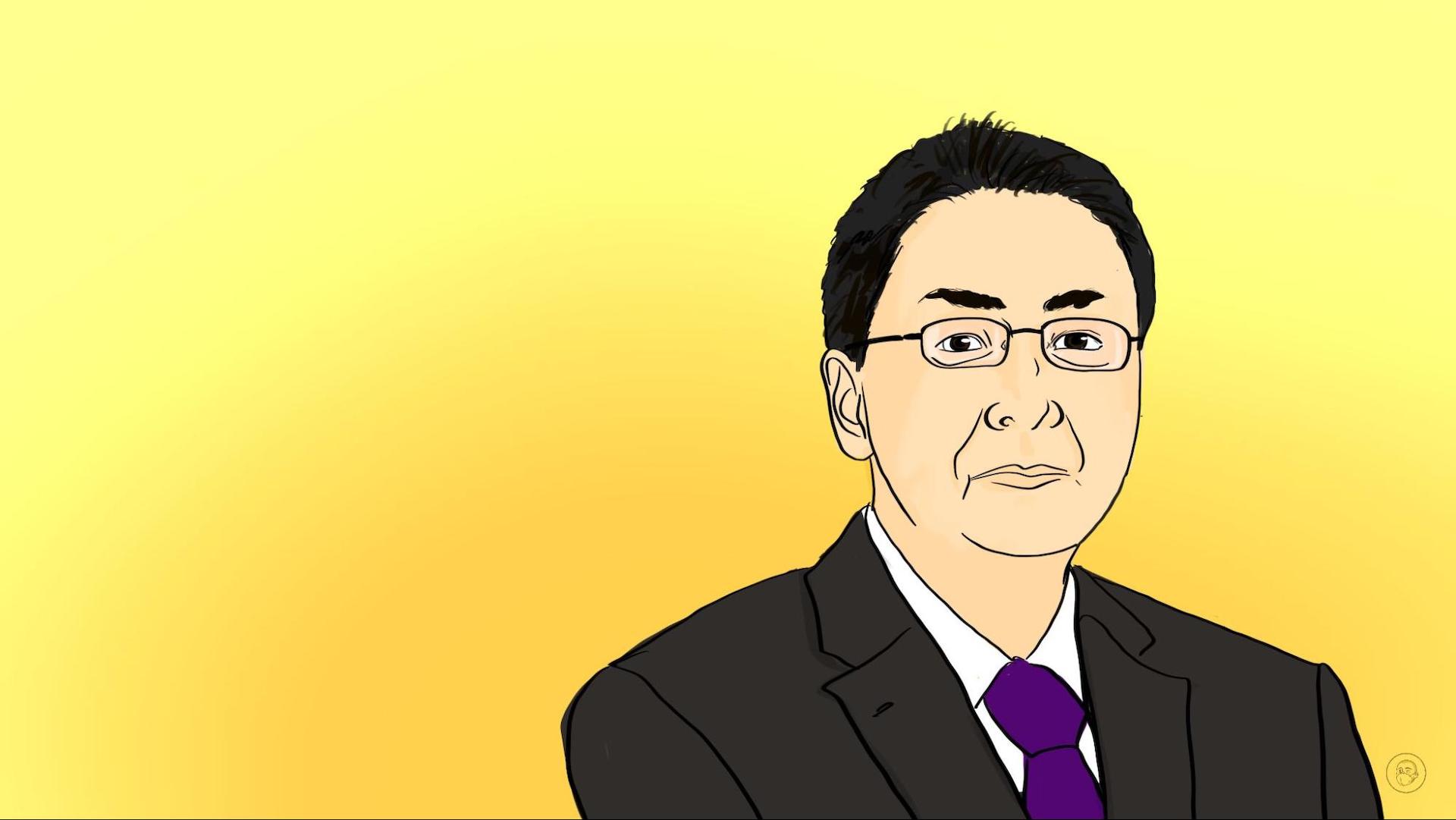China’s COVID-19 spike and a clash of civilizations
We talked to global health policy expert Yanzhong Huang about why China is sticking to its COVID-zero strategy in the face of the biggest rise in infections since the early days of the pandemic in Wuhan in 2020.

Yanzhong Huang is a senior fellow for global health at the Council on Foreign Relations, where he directs the Global Health Governance Roundtable series. He is the author of Toxic Politics: China’s Environmental Health Crisis and Its Challenge to the Chinese State.
Yanzhong is also a professor at Seton Hall University’s School of Diplomacy and International Relations, and so is one of the world’s leading experts on what we might call the politics of pathogens.
I spoke to Yanzhong by video call on March 30. This is an abridged, edited transcript of our conversation, part of my Invited to Tea interview series.
—Jeremy Goldkorn
A Google News search today for “COVID” and “China” spat up these headlines for me:
- No easy exit, Omicron outbreak tests China’s anti-COVID strategy
- Will Omicron finally overpower China’s COVID defenses?
- Shanghai expands COVID lockdown as new daily cases surge by a third
These stories are referring to the fact that since March 1, China has reported almost 90,000 infections nationwide, as well as its first deaths from COVID-19 in more than a year. The numbers are obviously very low by global standards, but the strain on Beijing’s COVID-zero strategy does seem to be very real.
Do you think that China is going to be able to stick to its COVID-19 strategy?
Well, if you ask the Chinese leader the same question, the answer is simply yes!
Shanghai used to be very proud of its targeted, flexible approach in handling COVID cases, an approach that actually was effective before the emergence of the highly transmissible Delta variant. Shanghai has relatively strong local state capacity, so basically epidemiologists and contact tracers were able to run faster than the virus. But now it’s different because we are talking about a stealth variant that spreads very fast with highly transmissibility.
Ninety-eight percent of the cases are actually asymptomatic, that makes it very difficult to use the PCR regime to detect the virus. Because if you don’t show the symptoms, you’re not going to go to visit a fever clinic to get tested. Right? And then there’s also this short incubation period and relatively quick recovery process. So when you trace to someone who was infected, your test results may turn negative. So that makes it difficult to do the contact tracing.
So that approach, the so-called precision or targeted approach that Shanghai was so proud of, no longer worked effectively against the Omicron variant. So now the local leaders face this dilemma: They want to minimize the disruption to the society caused by the COVID-zero strategy, especially considering that this is China’s financial and economic center with 24 million people. But in the meantime, the existing targeted approach is no longer effective in the city. That might explain why Shanghai now turns to heavy-handed lockdown measures.
Do we have a sense of the difference between the Chinese vaccines and the Pfizer, Moderna, and Johnson & Johnson shots? Would China be able to change its COVID-zero strategy more easily if it approved use of these vaccinations? Or is the Chinese healthcare system learning enough about vaccinations and treatments that it might be able to change the strategy?
The vaccines are very important. If China wants to move away from COVID-zero, vaccination and promoting booster shots, especially for the elderly, is crucial to build an immunity shield, which would allow China to move away from the draconian zero-Covid strategy. The challenge is that even though China now claims a near 90% vaccination rate, the Chinese vaccines are not effective in protecting against infections. Three doses of the inactivated vaccines, according to data from Hong Kong, seem to be significantly effective in protecting against severe illness and death, but not infection. The ineffectiveness of Chinese vaccines in preventing infection then justifies the sustaining of the zero-COVID strategy.
In China, about 52 million elderly are still not vaccinated. The National Health Commission officials are now publicly talking about promoting vaccination among the elderly, but at the local level, no serious efforts have been made to increase the vaccination rate for the elderly..
The real problem here is the tension between COVID-zero strategy, that does not differentiate between infections — they essentially treat all the infections the same., and a strategy that is mitigation-based, that would prioritize the at-risk population, including the elderly. But now the whole country seems to be doubling down on the effort to implement COVID-zero, which makes promoting booster shots or vaccinating the elderly a backburner issue.
What accounts for that? I’ve been surprised by the number of Chinese friends I have who are refusing to get vaccinations, not because they’re anti-vaxxers, but just because they don’t really trust the one they’re getting in China. And what accounts for the government not being stricter about compulsory vaccination?
Well, that is a good question! They could have been stricter about mandatory vaccination. Some mobilizational, even implicit coercive measures were implemented at the local level, but overall the government opted to make it voluntary. I don’t know whether this has anything to do with the effectiveness of the vaccines.
What do you make of what’s going on in Hong Kong, where there’s also been a tremendous spike in cases and a lot of severe illness and death, particularly amongst the elderly population that has been rather vaccine-hesitant?
If you compare Hong Kong with mainland China, there certainly was this parallel between the two. Both pursued a COVID-zero strategy. Both have a large unvaccinated elderly population, vaccine skepticism is a concern.
I hope what Hong Kong has experienced would teach the policy makers in Beijing about the importance of building public health surge capacity, protecting the elderly, and differentiating cases in implementation.
But I’m afraid they might draw another lesson. They might attribute Hong Kong’s failure to not being able to pursue a COVID-zero strategy wholeheartedly and thoroughly.
I just got back last night from London. I went there for a few days. And like most of America, the U.K. has stopped mask mandates. I was there with my kids, so we went to some tourist attractions and they were packed with people breathing on each other. And obviously much of America is looking like that, too.
It feels like there are two realities. The one where COVID-19 is still a huge challenge, the reality I read about by following healthcare journalists and news from China. And then the other reality, of huge crowds of unmasked people. Which I have to say, I really enjoyed being a part of!
Where are we in the United States? Is this going to be a problem or are we in fact learning to live with SARS-CoV-2?
We have to admit that we made big mistakes in addressing the initial stage of the pandemic in the U.S.. Even now I think we’re still making mistakes. In the context of the Ukraine crisis, the pandemic seems to have been forgotten! And as we try to move on, we really feel like that’s enough. That we can’t take it anymore.
In China, this is perceived as a failure. They were convinced that we chose to “lie flat” or coexist with the virus because we couldn’t handle the spread, even though we might feel that our lives are going back to normal.
If you read the articles published in China’s state media, it’s clear that the issue of COVID-zero is being politicized. It’s not just a debate between which approach works better. It’s more about a competition between two ideologies, two sets of political systems, and even, according to a recent article published in a Shenzhen newspaper, it’s a competition between two civilizations. So it will take some serious soul searching before China learns to live with the virus.
Invited to Tea with Jeremy Goldkorn is a weekly interview series. Previously:






